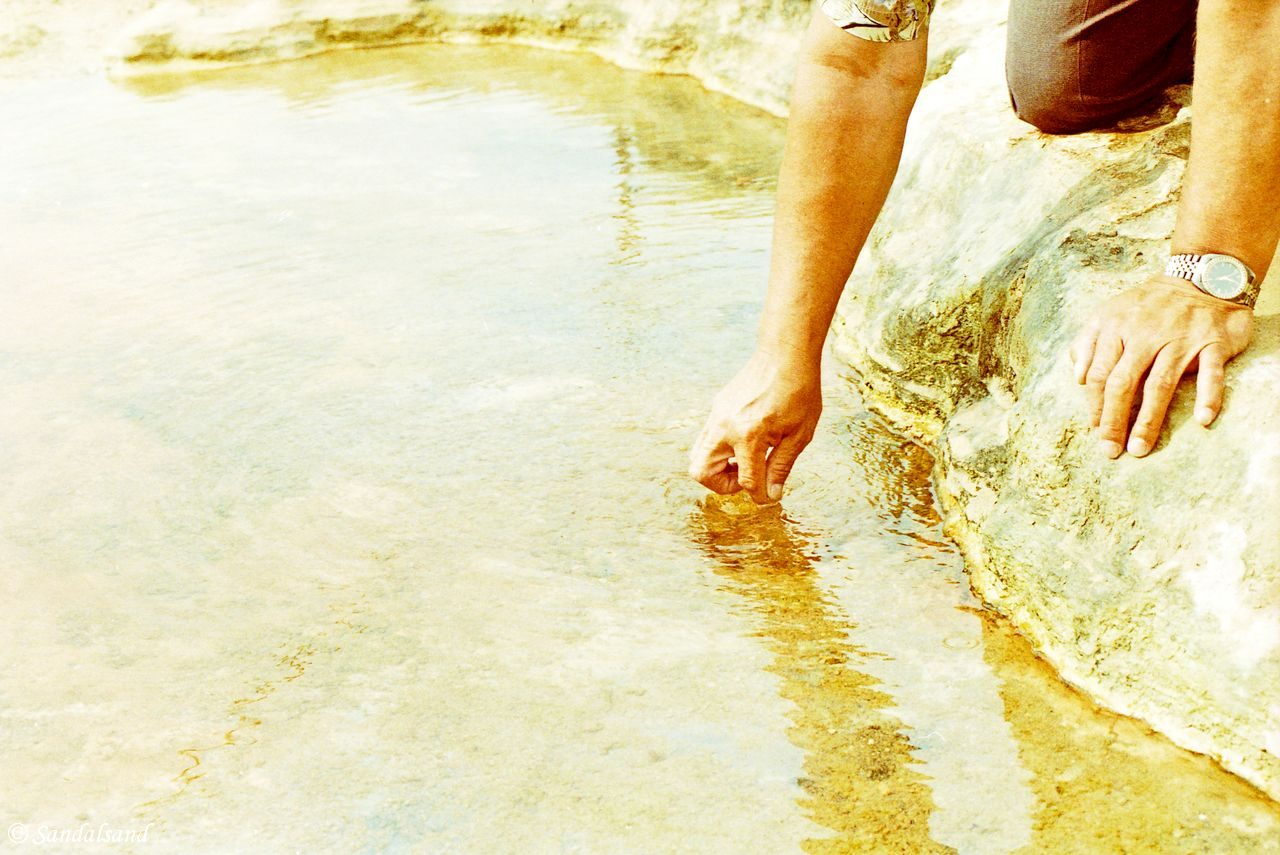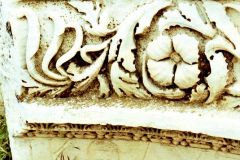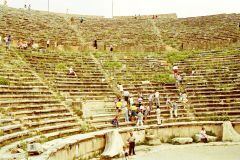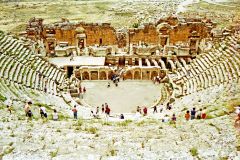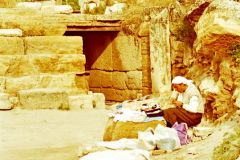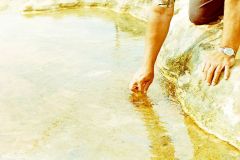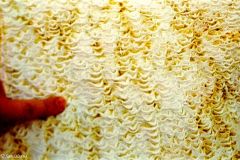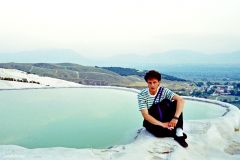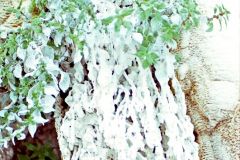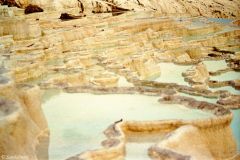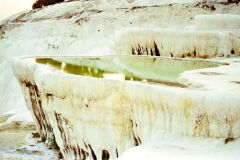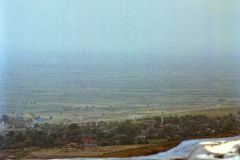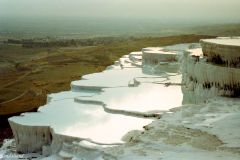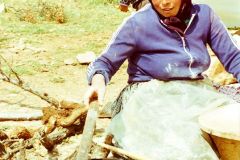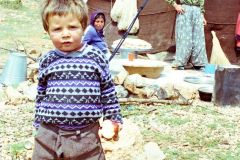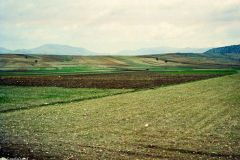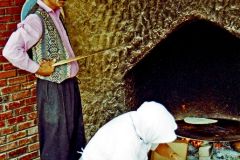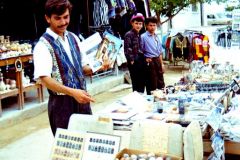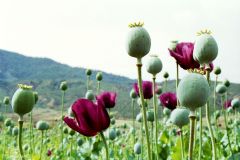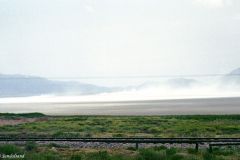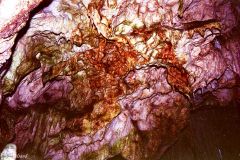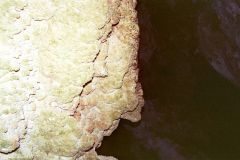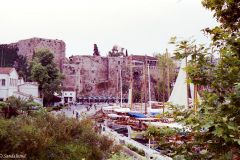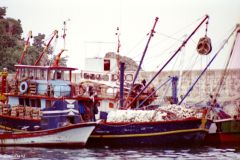From the first time I saw pictures of Pamukkale I dreamed of going there myself. My dream came true.
About Pamukkale
Pamukkale means “cotton castle” in Turkish and derives its name of course from the white chalk terraces in the mountain slopes near Denizli in south-western Turkey. The terraces are most beautifully laid out high above the plain. The terraces as well as the springs in the area are filled with hot water, holding 35 degrees.
All of this is natural of course. Indeed, this cotton “bed” and the hot springs have for thousands of years been attracting visitors from near and far. It was obvious that UNESCO in 1988 put Pamukkale-Hieropolis on its World Heritage List.
To be accurate, according to Wikipedia the calcium carbonate is deposited by the water as a soft jelly, but eventually hardens into travertine. Travertine is a form of limestone often with a fibrous or concentric appearance and exists in white, tan, and cream-colored varieties.
The white terraces at Pamukkale are not suitable for bathing, as they are too shallow. But there are other springs which are deeper. One of these, open to the public when we were there and tried it, is named after Queen Cleopatra of Egypt.
The ancient Greeks came here too for the healing powers of the springs. The Romans built an impressive city close to the springs. This city, Hierapolis, contains a large amphitheatre with a seating capacity of 15,000.
How we got to Pamukkale from Alanya
Staying in Alanya on the Turkish Rivera on a two-week vacation makes a good setting for exploring the interior of Turkey, at least the south-western part. Going to and back from Pamukkale is however quite a long stretch so we went for a two-day tour offer. That gave us plenty of time at the destination and also the opportunity to make a few other stops.
A caravanserai on the road and other highlighs
We visited the pleasant harbour of neighbouring city Antalya, some nice waterfalls, a “caravanserai” (old roadside inn where travellers could rest and recover from the day’s journey) on the Anatolian plateau. We were entertained by belly-dancer on the dinner table. The most memorable sight was this: A nomad camp in the middle of nowhere.
In fact this was a tourist trap. It may be that these people in tents were real nomads. However, their tents were pitched on the roadside, with ample place for parking buses, and with an opportunity to buy local handicrafts – which we didn’t.
I might however add that we also stopped at a Turkish carpet outlet. There we were so intrigued by the guided tour, and the carpets for sale, that we ended up buying two Yahyali carpets. (We disagreed on which of two carpets to buy, so we bought both of them.)

Turkish entry and exit stamps in my passport
This trip started with this entry. Pamukkale is also a World Heritage Site, read my explanation here.

